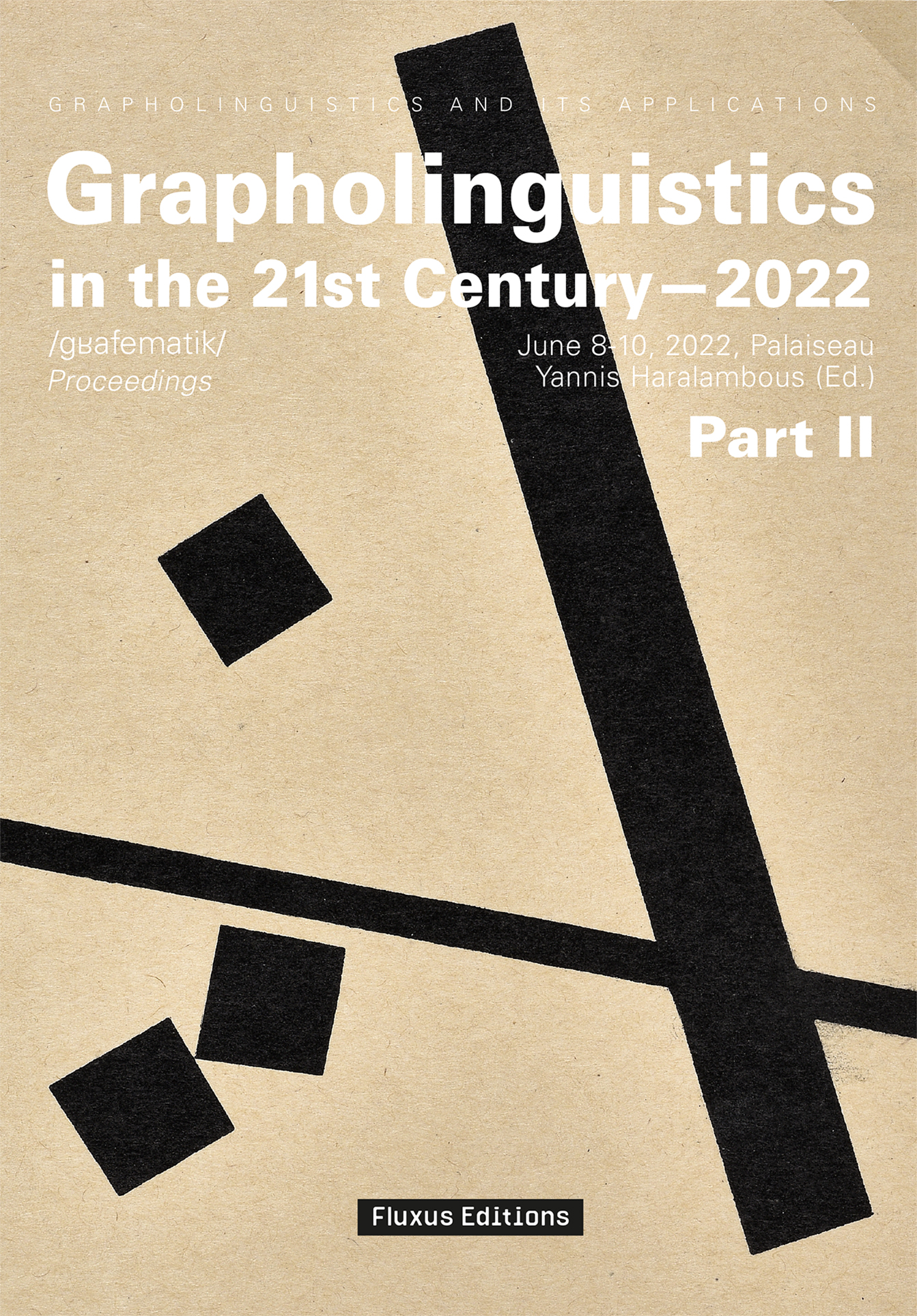
 ISSN: 2534-5192 (electronic) – 2681-8566 (print)
ISSN: 2534-5192 (electronic) – 2681-8566 (print)
 ISSN: 2534-5192 (electronic) – 2681-8566 (print)
ISSN: 2534-5192 (electronic) – 2681-8566 (print)| ◀ Kamal Mansour | ▲ Proceedings | Helen Magowan ▶ |
 ISBN: 978-2-487055-06-3 e-ISBN: 978-2-487055-07-0  | Fantastic Letters—Writing in a Fictional World Marc Wilhelm Küster  Abstract. This paper explores the concept of fictional writing systems over 500 years, from Thomas More’s Utopia to modern examples such as J.R.R. Tolkien’s Middle Earth and the Klingon script from Star Trek. Fictional writing systems are deliberately constructed to enhance world-building in fantasy and science fiction, creating a sense of “otherness” while reflecting familiar linguistic models. Case studies from European and Sino-Japanese traditions, including Ascendance of a Bookworm and video games like Genshin Impact, illustrate their role in shaping immersive narratives. The study contrasts closed fictional systems—fixed symbol sets designed for specific worlds—with open systems, which evolve over time. Examples such as More’s Utopian alphabet and Tolkien’s Tengwar script show how authors use familiar models to give their worlds credibility. The analysis also touches on more abstract systems like the non-linear ideograms from the short story and film Arrival, discussing the challenges of creating open systems and exploring why authors rather opt for closed ones. DOI: https://doi.org/10.36824/2022-graf-kues
Marc Wilhelm Küster (2022), “Fantastic Letters—Writing in a Fictional World,” in Proceedings of Grapholinguistics in the 21st Century, 2022 (Yannis Haralambous, Ed.), Grapholinguistics and Its Applications, Vol. 10, Brest: Fluxus Editions, 639–652.
@INPROCEEDINGS{gla10-kues,
AUTHOR = {Marc Wilhelm Küster},
EDITOR = {Haralambous, Yannis},
TITLE = {{Fantastic Letters---Writing in a Fictional World}},
BOOKTITLE = {{Proceedings of Grapholinguistics in the 21st Century, 2022}},
SERIES = {{Grapholinguistics and Its Applications}},
VOLUME = {10},
PUBLISHER = {Fluxus Editions},
ADDRESS = {Brest},
YEAR = {2022},
PAGES = {639--652},
DOI = {https://doi.org/10.36824/2022-graf-kues},
}
|